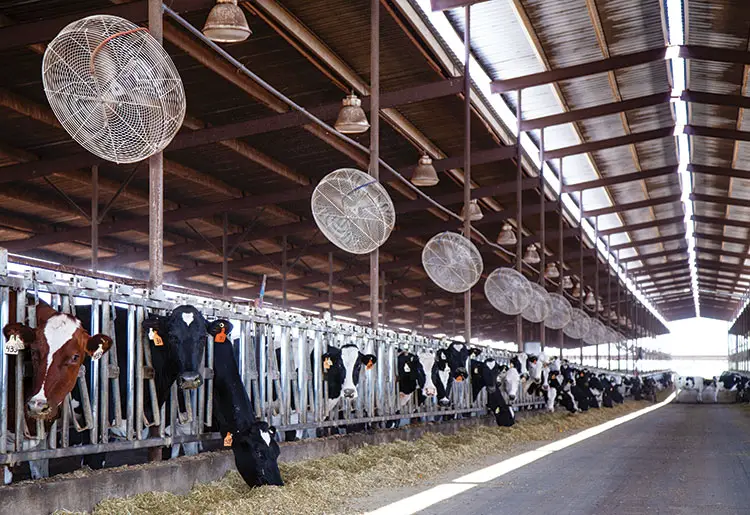Are you wondering what types of barn ventilation is the best investment? One thing that we know for sure is that having adequate barn ventilation is essential to the health of your livestock. But not just any ventilation will do. You must have the right system for your specific barn. So, we decided to lay out a buyer’s guide to help you choose the right ventilation for your unique needs.
Barn Ventilation Specifics
There are a number of factors that you need to consider before making a purchase. Primarily, you need a system that meets the needs of your barn. This varies and is dependent on a number of factors.
Natural Ventilation Systems
Natural ventilation involves letting nature do the work. This process is dependent on letting air circulate through the building. Rollup doors, open sidewalls, and ridge vents are used to allow air to flow freely through the structure.
There are a number of unique benefits that come with natural ventilation. The most notable advantage is that it doesn’t require electricity, making it highly cost-efficient and environmentally friendly. Furthermore, it generally requires less maintenance.
With that said, natural ventilation is only possible in areas with moderate climates, so not everyone will be able to utilize it.
Mechanical Ventilation Systems
Just like the name implies, mechanical ventilation uses technology to circulate air through the structure. This type of ventilation is perfect for structures that need to remain at a consistent temperature since barn fans give more control over the flow of air. Here’s a look at some of the different types of mechanical ventilation.
· Ceiling Fans: Ceiling fans are installed throughout the structure to improve airflow.
· Air Inlets: Air inlets let you adjust the amount of air flow through the structure.
· Exhaust Fans: Removes stagnant air from the structure. Exhaust fans are required for closed structures housing livestock.
· Portable Fans: Great choice for individuals who only need seasonal ventilation or a short-term solution.
The biggest downside to mechanical ventilation is cost. But there are other factors to consider, mainly finding methods of controlling air pressure.
Controlling Air Pressure
Structures that are ventilated mechanically will have one of three types of air pressure – positive, negative, or neutral. So if you choose this route, then you need to understand the key differences between the three.
Positive Air Pressure
In order to create positive air pressure, you have to pull air into the structure. This requires fans. Positive air pressure is preferable when doors must be left open to allow access to livestock. Keep in mind that you can only truly generate positive air pressure in a sealed, airtight structure ( i.e. when the doors and windows are closed).
Negative Air Pressure
In order to create negative air pressure, you have to remove air from the structure. That air is replaced by cool air using inlets. In this type of setup, it’s important to balance exhaust and input fans. Negative air pressure is used in structures where the doors are closed occasionally.


